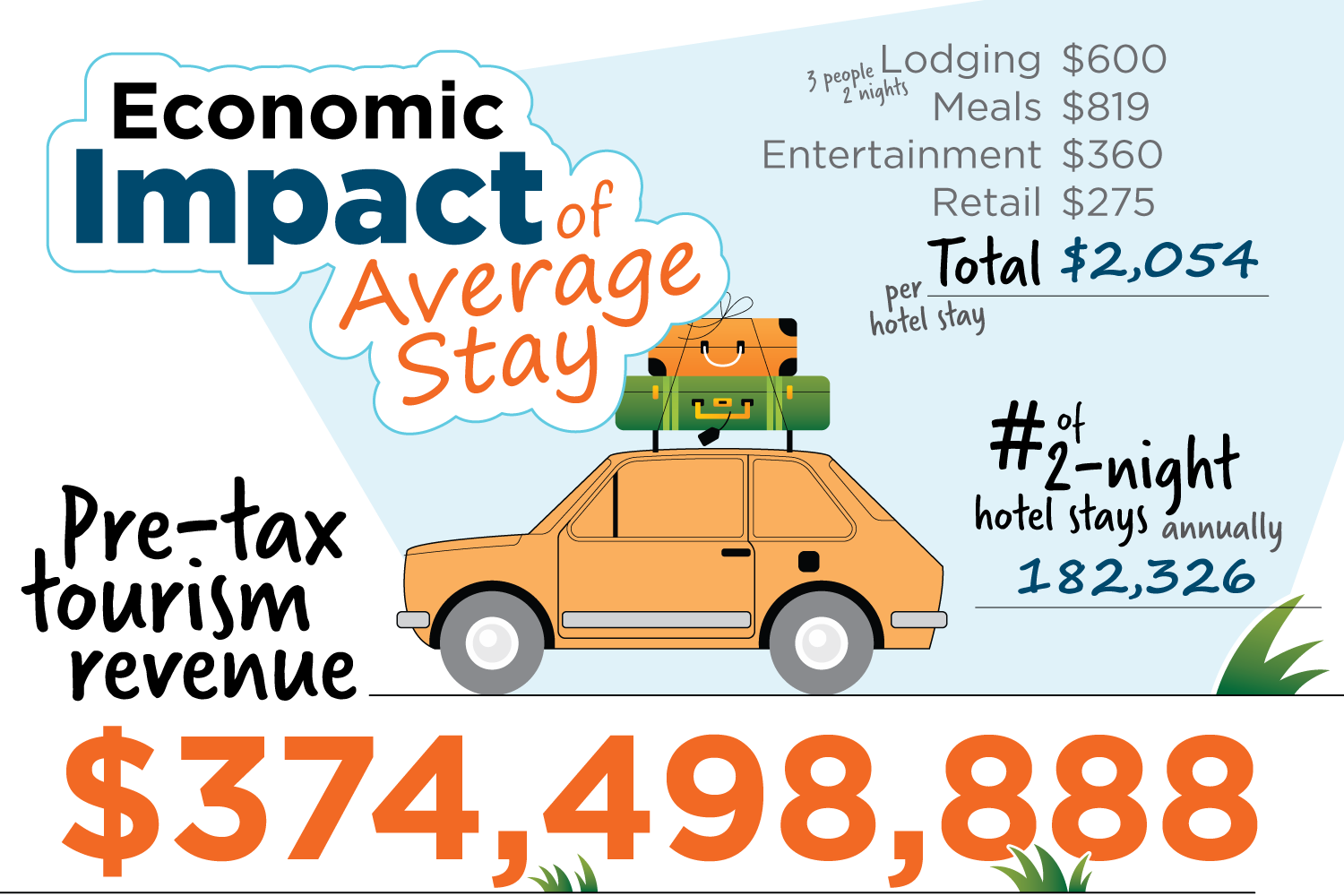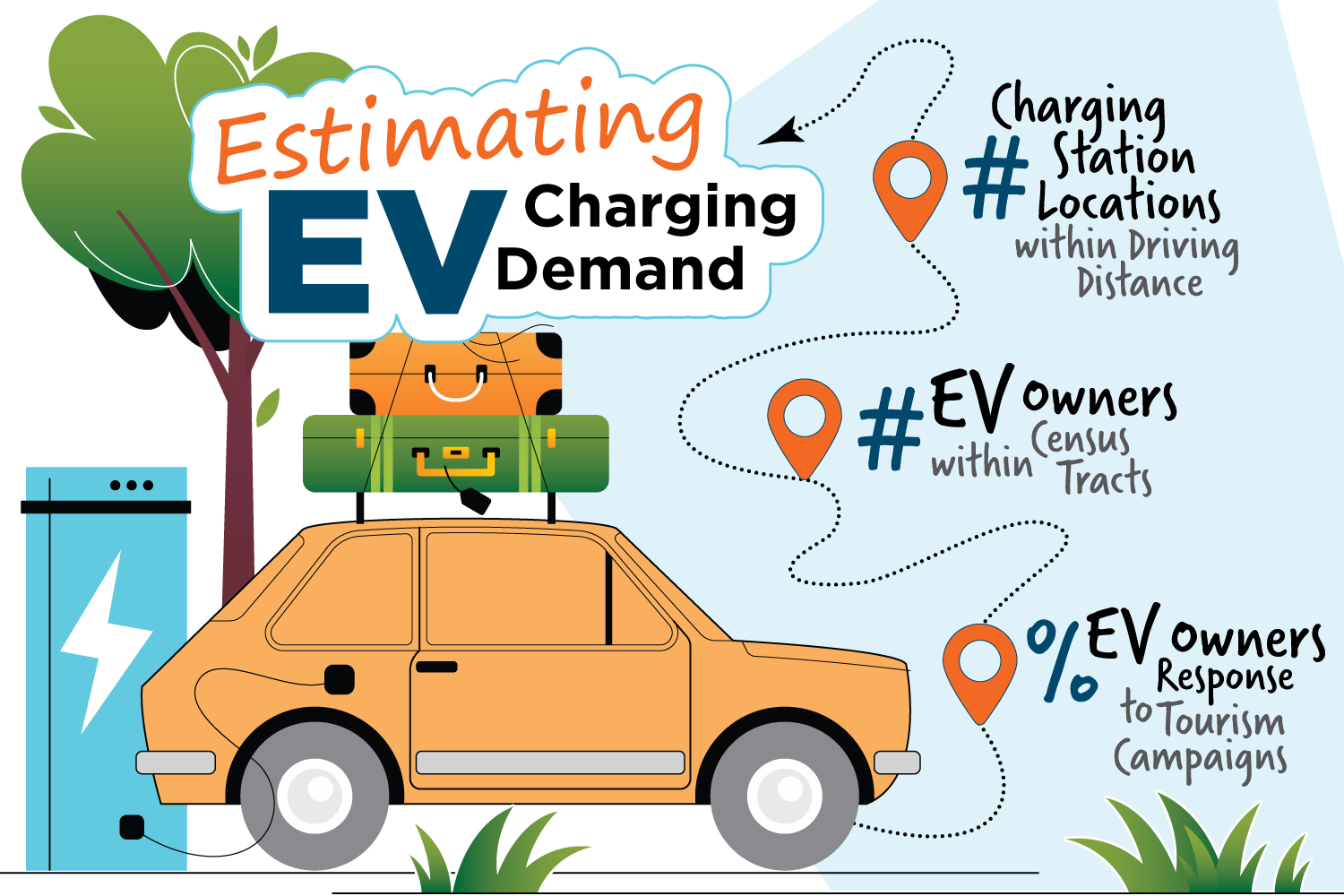May 6, 2025
In 2013, when electric vehicles (EVs) were new and charging stations were few, Visit Oregon created the Electric Vehicle Byways—recommended itineraries built around EV charging needs. They continue to update this travel guide to highlight fast charging stations, places to visit and explore during a slow charge, and overnight lodging that has Level 2 charging for guests.
On our blog, we recently explored how placing charging stations in commercial locations can attract more customers to those locations. The same question can be applied to tourism: how can destinations leverage EV charging to attract more tourists? What investments in charging infrastructure are the most worthwhile for this purpose?
How can destinations leverage EV charging to attract more tourists?
Exploring the Connection Between Tourism and EV Charging Through Three Projects
Kittelson has a long history in travel demand planning and designing circulation elements for resorts, hotels, lodges, and campgrounds, and we’ve worked on transit and bike/ped plans to reduce congestion and improve safety for some of the top names in destination vacations. Blending our expertise in vacation-related travel and EV charging infrastructure, we’re working with three clients to assess the economic potential of public charging for visitors’ EVs:
- a year-round resort with many restaurants, retail, and entertainment options;
- a rural county with a multitude of outdoor adventures in the spring and summer; and
- an agricultural county that wants to increase agritourism.
For each client, we started by creating a profile of the average visitor’s travel habits. Using data from visitor’s bureaus, tourism districts, tax assessors, and other sources ranging from academic research to online travel booking sites, we estimated the number of tourists, their means of travel, the length of their stay, and how they spend their time.
For example, in the rural county, 95% of visitors drive their own cars, and more than half bring a boat, a camper, or bikes. They typically stay for a week, often at a campground or rental cabin, and they meet up with friends and family. At the resort, about 54% of the people who visit drive their own car, the average group size is two adults and a child, and they typically stay for two hotel nights.
We then interviewed business owners to flesh out the data and create a baseline measurement for the direct impact of pre-tax tourist dollars on local businesses. This graphic shows our estimate for the resort based on 65% occupancy of its many hotel rooms:

Calculating EV Charging Demand
Creating a network of accessible charging stations and then running a marketing campaign targeted to EV drivers can increase tourism dollars. In addition to understanding traveler behaviors as described above, we can also estimate the number of EV owners within driving distance of the destination—about three hours for a weekend getaway and two hours for a day trip. Using GIS, we can create a map of driving distances and travel time and then determine if there are sufficient DC Fast Charging (DCFC) stations to get an EV driver from the origin to the destination. If not, we drop those origins from the analysis.
Next, we estimate the number of registered EVs in the origin census tracts. Some states publish registration data by zip code or county; in other places we use national research. That provides the number of target visitors. We use data from visitor’s bureaus to estimate the percentage of the target that have responded to recent, targeted “visit us” campaigns to determine how many EV drivers might visit the EV-friendly destination. For example, about 400,000 EVs are registered at addresses that are within three hours of the resort. If 1% (an arbitrary number for this example) of those EV drivers (4,000 visitor groups) came for a two-night stay, it would generate about $8 million in revenue for resort businesses.
Tailoring Charging Options to Traveler Habits
Combining estimated demand, traveler behaviors, and our clients’ goals, we can then make EV charging recommendations.

For example:
- The resort has many attractions and visitors generally stay on the property, although visitors drive or take a shuttle between attractions which can be miles apart. We estimated that a charging plaza with 14 DCFCs (28 ports) could meet initial demand, charging EVs when they arrive and when they leave. Installing one highly visible DCFC at the resort entrance would add to the resort’s sustainability messaging, and cost less to maintain and manage than 100+ Level 2 charging stations at individual hotels.
- In the rural county, EV drivers will typically stop at a DCFC before leaving the interstate and go directly to a campsite, cabin, or inn. They will charge while they settle in and will need access to EV charging as they explore towns, trails, and waterways. We expect DCFCs at key gateways into the county, but Level 2 charging will be more cost effective and encourage people to spend a few hours visiting restaurants, shops, and museums.
- The agricultural county tends to attract day trippers who drive from tasting room to farm stand to outdoor adventure. Charging stations will need to do triple-duty to allow EV tourists to explore the area without range anxiety and help employees adopt EVs for their commutes to work. We’re just getting started on this project and are excited to share what we come up with!
Do You Vacation With an EV?
You can help us refine our tourism models! Take this brief survey to let us know how you travel and the role EV charging plays in your vacation planning.
This is an exciting, relatively new process and we’ve enjoyed the challenge of helping tourism clients make strategic and data-driven changes to boost business. If you have any ideas or information that will add dimensions to our analysis, or are interested in discussing it further, feel free to contact us!
